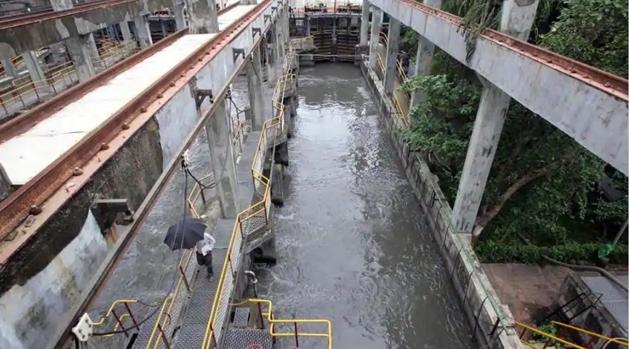Now that sanitation rates have improved, can sewage treatment get attention?
While sanitation has received attention, the country is struggling to safely dispose of the contents of its toilets and industrial effluents.
It is self-congratulatory time for the government, with advertisements proclaiming the success of the Swachh Bharat campaign.

Government data shows that there has been progress in sanitation. According to the Economic Survey 2017-18, the percentage of rural population covered by sanitation grew from 9% in 1991 to 32% in 2011. The figure grew to 39% in 2014, but has increased substantially to 76% in 2018. The number of Indians who defecate in the open has reportedly reduced by two-thirds - from over 500 million to less than 200 million.
While sanitation has received attention, the country is struggling to safely dispose of the contents of its toilets and industrial effluents. According to data with the Lok Sabha, Maharashtra’s cities generated 9986 (million litres a day (mld) of sewage in 2014 of which only 4225 mld - 42% - is treated before it is released into the environment. In 2018, the state generated 8143 mld – there is no explanation why the quantity of sewage has gone down –and the amount of sewage treated went up to 5160 mld (63%). Maharashtra is one of the most urbanised in the country, with nearly 45% of the population living in towns and cities.
Other states are worse off. Uttar Pradesh has Sewage Treatment Plants (STP) facilities to treat only 2626 mld of the 7124 mld of sewage produced by its urban centres. So, two-thirds of the effluents end up polluting the Ganga and its tributaries. Uttar Pradesh is one of the least urbanised states in the country, with less than a fourth of its population living in towns. The problem of untreated sewage will increase as the state urbanises.
The National Mission for Clean Ganga, set up to restore the river, has reported that cities and villages along its banks generate 12,000 mld of sewage. Before the project started in May 2014, STPs processed less than 5% of the sewage before releasing it into the river system. By 2018, treatment capacity has grown to 4,000 MLD. More STPs, with a capacity of 1,900 mld, are under way, but even after completion of these projects, only half the sewage released into the river will be treated.
Closer home, the story is only a little better. According to the Maharashtra Pollution Control Board, of the 2,671 million litres per day (MLD) sewage that Mumbai generates, the city treats only 2,016 MLD (75%), while the remaining is being dumped into creeks and the sea. Data submitted to the Bombay High Court last year suggests that there has not been any improvement in sewage treatment in Mumbai over the past year.
Untreated sewage released by rivers has disastrous consequences for marine life. UNESCO estimates that there are around 500 dead zones in the world’s seas, covering more than 245,000 square km, equivalent to the area of Uttar Pradesh, created by chemicals, plastics and other wastes flushed in by rivers.
Experts said that ignoring sewerage treatment while improving sanitation is myopic. Suresh Rohilla, head of waste water research, Centre for Science and Environment, said that sanitation is being separated from sewerage. “They think that sewerage is only conveyance, not treatment. This is polluting water sources.”
Stay updated with all the Breaking News and Latest News from Mumbai. Click here for comprehensive coverage of top Cities including Bengaluru, Delhi, Hyderabad, and more across India along with Stay informed on the latest happenings in World News.
Stay updated with all the Breaking News and Latest News from Mumbai. Click here for comprehensive coverage of top Cities including Bengaluru, Delhi, Hyderabad, and more across India along with Stay informed on the latest happenings in World News.






